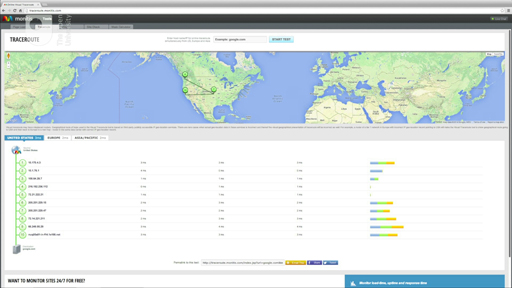1.3 Datagrams on the move

Transcript
We have seen how, in theory, datagrams of information move around the internet. It’s actually possible to see this in action, often with surprising results.
You’ve seen the route the datagrams took in the video, now try it yourself.
Activity _unit5.1.1 Activity 1 Datagrams
Using Visual Trace Route [Tip: hold Ctrl and click a link to open it in a new tab. (Hide tip)] , spend about 10 minutes exploring the routes to some of the following Australian organisations:
Keep in mind that the route being shown by the Visual Trace Route tool starts from the location where the tool is running, not your local computer. However, you can look at the routes from different regions, USA, Europe and Asia/Pacific, by switching between the tabs.
Be warned! You might be surprised at what you find – information is not necessarily coming from where you might expect it to. Also, bear in mind that things change frequently when it comes to the internet; not only might the route be different if you look at the same destination at different times, but even the location where the information comes from might be different.
Discussion
You will have discovered that the route to the Sydney Morning Herald website did not terminate in Australia.
A URL ending in ‘.au’ is an Australian domain, but that doesn’t mean that the computer hosting the site has to be in Australia.
The Australian Domain Name Administrator (auDa) is responsible for licensing users of ‘.au’ names, and it has rules that require the licensees to have some connection with Australia (that is not the case with all countries; some authorities allow anyone to license their names). However, where the website is hosted – which computer the website is stored on – is a different question from who is using the URL. For example, Google (based in the USA) offers a service hosting websites (Google Sites). It’s possible to use a service with a ‘.eu’ (European) domain name, with the result that the ‘.eu’ site is in the USA.
In addition, websites that receive heavy usage from a particular location might be cached locally – that is to say, copies of the website’s data might be temporarily stored on a computer closer to the location from which the information is being accessed. This saves making heavy use of long-distance connections.
How many stages did your information take? Did anything surprise you about the route your information took?
